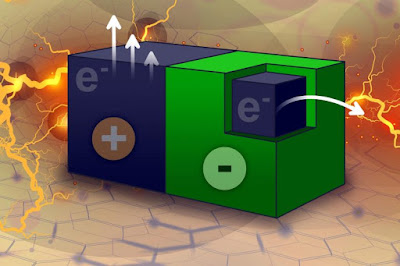MIT's New Way to Generate Electricity

Big Discovery by MIT Engineers Source: MIT No Wires or Battery Needed MIT engineers have discovered a brand new way of generating electricity. They're using tiny carbon particles that create an electric current by interacting with their liquid environment of an organic solvent. The particles are made of crushed carbon nanotubes (blue in the image) coated with a teflon-like polymer (green). The MIT researchers say the current can power micro or nanoscale robots and can also be used to trigger chemical reactions. Their process of generating electricity is completely new and innovative. All that is necessary is to surround the carbon particles with the solvent....






